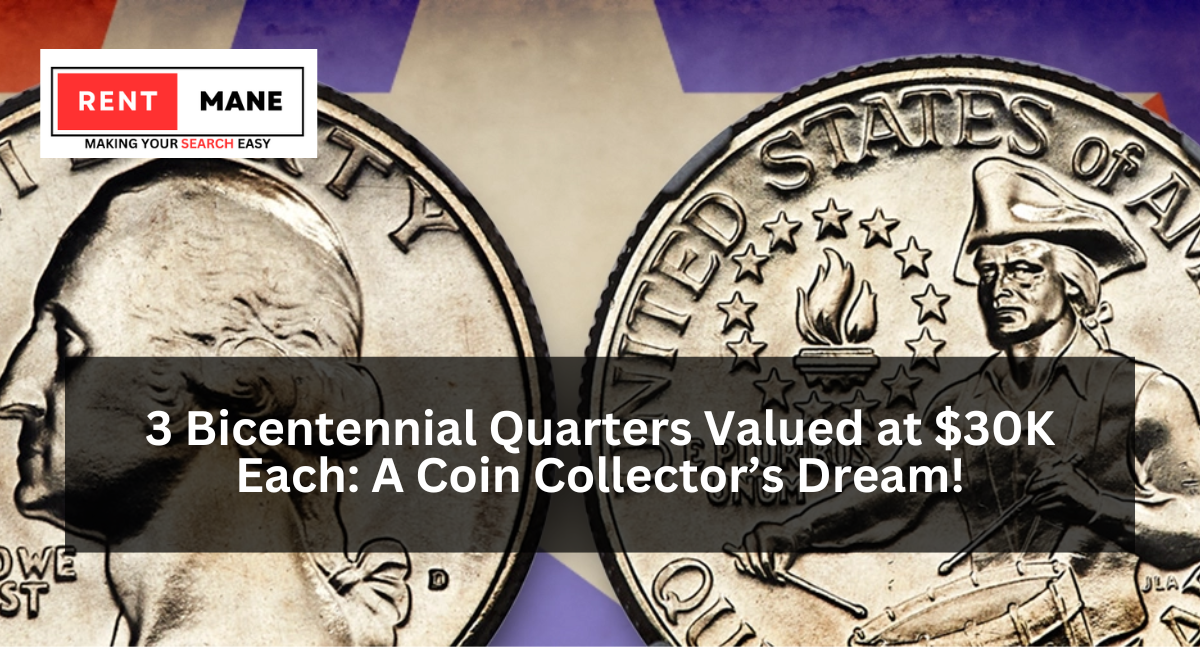For many coin collectors, the thrill of discovering rare coins while sifting through pocket change is exhilarating. Among the gems they seek are the Bicentennial quarters, minted in 1975 and 1976 to honor the 200th anniversary of the United States.
While millions of these coins were produced, a few rare versions have recently gained remarkable value—each worth up to an astonishing $30,000. Let’s delve into the details of these extraordinary coins and explore what makes them so coveted.
The 1976 Bicentennial Quarter: A Mintmark Error
One of the most sought-after versions of the Bicentennial quarter is the 1976 quarter without a mintmark. Typically, quarters bear a mintmark that indicates where they were produced—Philadelphia (P), Denver (D), or San Francisco (S).
However, a small batch of these 1976 quarters was inadvertently released without any mintmark. This mistake has led to their rarity, making them a treasure in the eyes of collectors.
Imagine the excitement of finding one of these no-mintmark quarters in your pocket! Coins in pristine condition can command prices of up to $30,000. If you stumble upon one, it could be a life-changing discovery. The thrill of owning such a rare piece of history adds to the allure of coin collecting.
The Silver 1976-S Bicentennial Quarter
Another valuable collector find is the 1976-S Bicentennial quarter, which contains 40% silver. These coins were part of a particular collector’s series and were not intended for general circulation. However, a few of these silver quarters somehow made their way into the hands of the public.
Today, if you can find a 1976-S quarter in excellent condition, it could fetch around $30,000.
The unique blend of silver content and the iconic Bicentennial design make these quarters highly prized. For collectors, the silver aspect adds another layer of desirability, as the value of precious metals can fluctuate, making these coins even more appealing over time. If you’re fortunate enough to own one, consider having it appraised!
The Double Die Bicentennial Quarter
The double-die Bicentennial quarter is yet another rare and valuable variant. This error coin is created when a coin is struck twice, resulting in a noticeable doubling effect on specific parts of the design, especially in the lettering. Double die errors are always in high demand among collectors, and Bicentennial double die quarters in mint condition can be worth up to $30,000.
The unique characteristics of a double die error give these coins a distinct appeal. For collectors, finding such a piece adds a sense of excitement and uniqueness to their collection. It’s not just about owning a coin; it’s about owning a piece of history that stands out.
Why Are These Coins So Valuable?
The immense value of these Bicentennial quarters stems from their rarity and the circumstances surrounding their production. Here’s a closer look at what makes them unique:
- Minting Errors: Coins with minting errors are inherently rare. The absence of a mintmark on some 1976 quarters or the double die effect on others makes these coins desirable to collectors who appreciate the uniqueness of error coins.
- Silver Content: The 1976-S Bicentennial quarters are precious due to their silver composition. Collectors are often drawn to coins that contain precious metals, as their value tends to rise with fluctuations in the market.
- Historical Significance: The Bicentennial quarters commemorate a significant milestone in American history—the 200th anniversary of the United States. This historical significance adds to their allure, as collectors often seek coins that tell a story.
- Condition Matters: The condition of the coin plays a crucial role in determining its value. Well-preserved coins, without scratches or wear, are more likely to command higher prices. Collectors are willing to pay a premium for coins in excellent condition.
How to Identify Valuable Bicentennial Quarters
If you’re checking your change, here are some tips to identify valuable Bicentennial quarters:
- Look for the Mintmark: Check if your 1976 quarter has a mintmark. If it lacks one, it could be the coveted no-mintmark error.
- Check for Silver: Examine the edge of the coin. It might be a 1976-S silver quarter if it has a silvery hue. These coins are easily distinguishable from the standard copper-nickel versions.
- Examine for Doubling: Hold the quarter under good lighting and look closely at the lettering and design. If you notice any doubling, it could be a double-die quarter, adding significant value.
- Consult Resources: Use reputable coin valuation websites or reference books to compare your coins. Collectors’ forums can also provide valuable insights from experienced enthusiasts.
Can You Still Find These Rare Quarters?
While it’s rare, there is a chance of finding these valuable quarters still in circulation. Many collectors share stories of unexpected finds in their change. If you have a keen eye and a bit of luck, you might uncover one of these extraordinary coins yourself.
Regularly checking your pocket change, rummaging through old coin jars, or visiting estate sales could yield surprising results. Every coin you find tells a story; you never know when you might come across a treasure!
Conclusion: The Thrill of the Hunt
In conclusion, the allure of collecting rare coins like the Bicentennial quarters is rooted in the thrill of discovery and the possibility of holding a piece of history. The no-mintmark error, the 1976-S silver quarter, and the double die variety are exceptional finds that can each be worth up to $30,000.
READ MORE: Rare Bicentennial Quarter and Rare Dimes Worth $30 Million Each Are Still in Circulation

